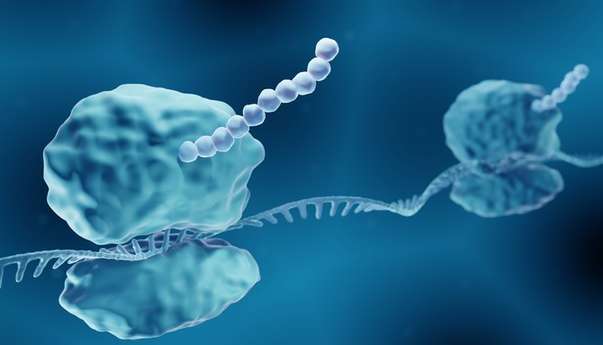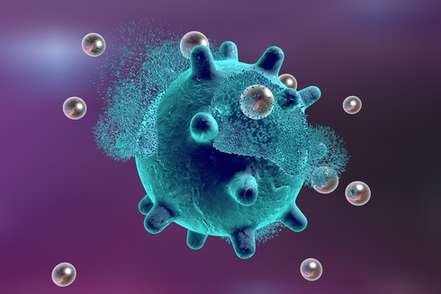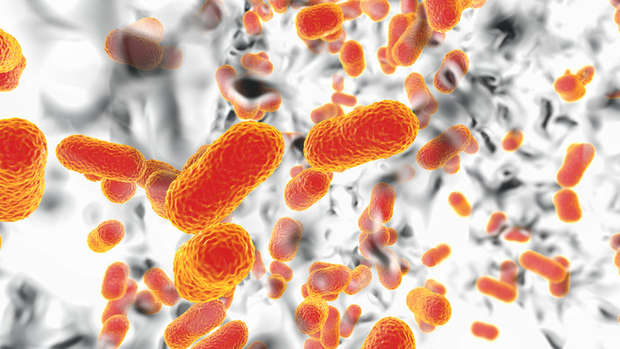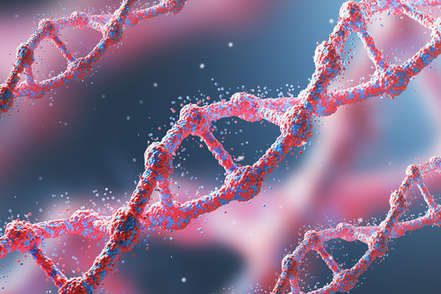The linkage phenomenon is a pivotal concept in the field of genetics. It describes the tendency of genes located on the same chromosome to be inherited together. In 1910, Thomas Hunt Morgan made a groundbreaking discovery through his experiments with fruit flies. He observed that the genes responsible for eye colour and wing shape in fruit flies were not inherited independently but instead showed a clear linkage relationship. This finding not only provided direct experimental evidence for the linkage phenomenon but also propelled genetics from the simple framework of Mendelian laws towards a more complex theory of chromosomal inheritance.
The biological significance of the linkage phenomenon is profound and far-reaching. It serves as a crucial foundation for genomic mapping, enabling scientists to create maps showing the relative positions of genes on chromosomes. Additionally, linkage plays a dual role in maintaining haplotype stability and generating genetic diversity.
This article examines the linkage phenomenon in genetics, where genes on the same chromosome are inherited together. It covers molecular mechanisms, phenotypic effects, genetic distance calculations, and the evolution of linkage map construction, highlighting applications in gene cloning, disease genetics, and crop improvement.
Genetic Foundations and Analysis of Linkage
Molecular Mechanisms
The molecular mechanisms underlying the linkage phenomenon are closely tied to chromosomal structure and the process of meiosis. Chromosomes serve as carriers of genes, and their linear arrangement determines the relative positions of genes on the chromosome. During meiosis, homologous chromosomes pair up, a process that provides the basis for the co-inheritance of linked genes. However, meiosis is not static; crossing-over events can disrupt the strict linkage between genes. Crossing-over refers to the exchange of genetic material between non-sister chromatids of homologous chromosomes during prophase I of meiosis, leading to the recombination of some genes. But this crossing-over is not unrestricted; not all genes can freely recombine, thus maintaining the existence of linkage. Linkage groups, as functional units of chromosomes, connect a set of genes that tend to be inherited together during the genetic process, providing a basic unit for studying the linkage phenomenon.
 Molecular Mechanisms of Chaining
Molecular Mechanisms of Chaining
Phenotypic Manifestations
The phenotypic manifestations of linked genes are reflected in the distribution of parental and recombinant offspring. In genetic experiments, statistical analysis of offspring phenotypes can help determine whether there is a linkage relationship between genes and how tight that linkage is. For dominant-recessive linkage scenarios, test crosses are a commonly used research method. By crossing a heterozygote with a recessive homozygote and observing the phenotypic ratios of the offspring, one can infer the linkage relationship between genes. In studies of dominant-dominant interactions, reciprocal crosses are more appropriate. Through reciprocal crosses between individuals of different genotypes and analysis of the phenotypic combinations of the offspring, the interactions and linkage relationships between genes can be revealed.
Calculating Genetic Distance
Calculating genetic distance is a crucial step in the analysis of linked genes. The recombination frequency (RF) formula is the basic tool for this calculation, with the formula being RF = (Number of recombinant individuals / Total number of offspring) × 100%. By counting the number of recombinant individuals in the offspring, dividing it by the total number of offspring, and then multiplying by 100%, one can obtain the recombination frequency between two genes and thus determine their genetic distance. Three-point test crosses offer distinct advantages over two-point test crosses. A three-point test cross can not only determine the order of genes on a chromosome but also quantify the degree of interference from crossing-over. By analyzing the linkage relationships between three genes, a more comprehensive understanding of the arrangement and genetic laws of genes on the chromosome can be gained.
 Genetic inheritance formula (Fay et al., 2006)
Genetic inheritance formula (Fay et al., 2006)
Construction of Genetic Linkage Maps
The evolution of linkage map construction has transitioned from classical methodologies to cutting-edge modern technologies. In classical approaches, the two-point test cross relied on calculating recombination frequencies between two genes to estimate genetic distances, providing only relative positional information. The three-point test cross, by contrast, analysed the linkage relationships among three genes, enabling more precise mapping of gene locations.
In the realm of modern genetic research, several key advancements have significantly propelled the field forward. Below are some of the pivotal developments and their applications:
Integration of SNP/SSR Markers:
The integration of SNP (Single Nucleotide Polymorphism) and SSR (Simple Sequence Repeat) markers stands out as a crucial advancement.
SNPs and SSRs are abundant across genomes and display high levels of polymorphism, thereby enhancing the resolution and precision of linkage maps.
Introduction of Hi-C Technology:
- Another groundbreaking development is Hi-C technology, which operates on the principle of chromosome conformation capture.
- This technique offers novel insights by elucidating the three-dimensional spatial relationships between genes.
Integration of Genomics:
- Furthermore, the integration of genomics, which combines genetic and physical maps, has elevated the accuracy and reliability of linkage maps.
- This integration facilitates the precise localization of genes within the genome.
Services you may interested in
Application of Genetic Linkage Maps
Linkage maps find extensive applications across various fields, including gene cloning, disease genetics, and crop improvement.
Wei and colleagues focused their research on rice quantitative trait genes and their key variations, with the aim of constructing a map of these critical variations and developing breeding tools.Using the Web of Science database, they identified 225 rice QTL (Quantitative Trait Locus) genes. After excluding genes studied through mutant mapping or reverse genetics approaches, they combined genomic sequence data with literature information to precisely anchor 348 key functional variation sites (QTNs) to specific genomic locations. This led to the creation of a molecular map (QTN map) comprising 562 alleles, with 76.1% of the variation sites located within coding regions.
 Application of gene mapping in rice(Wei et al., 2021)
Application of gene mapping in rice(Wei et al., 2021)
Bernard and colleagues embarked on a study focusing on Persian walnuts, employing genetic linkage mapping to conduct QTL (Quantitative Trait Locus) analysis on phenological traits and lateral bearing habits in walnuts. Their research combined genome-wide association studies (GWAS) with linkage mapping, utilizing multi-locus models such as MLMM, FarmCPU, and BLINK for GWAS analysis to pinpoint genomic regions linked to these traits. Additionally, they constructed genetic linkage maps to further localize QTLs associated with these characteristics.
Through GWAS, the research team identified multiple QTLs across the walnut genome linked to phenological traits and lateral bearing habits. These QTLs were distributed across various chromosomes, suggesting that these traits are likely polygenic, influenced by multiple genes. Within certain QTL regions, the team pinpointed candidate genes potentially associated with these traits. Further functional validation of these candidate genes will deepen our understanding of the genetic mechanisms underlying these characteristics.
 Exposing the genetic structure of agronomic traits in walnut using genetic mapping(Bernard et al., 2020)
Exposing the genetic structure of agronomic traits in walnut using genetic mapping(Bernard et al., 2020)
Fang and colleagues conducted a study focusing on the progeny derived from a cross between barley varieties Golden Promise (GP) and H602. Utilizing genetic linkage mapping, they performed QTL (Quantitative Trait Locus) analysis on traits such as grain length, grain width, and thousand-grain weight in barley. The research employed Specific Locus Amplified Fragment Sequencing (SLAF-seq) technology to construct a high-density genetic linkage map. This map encompassed 12,635 SLAFs (Specific Locus Amplified Fragments) and 26,693 SNPs (Single Nucleotide Polymorphisms), spanning seven chromosomes with a total genetic distance of 896.74 cM and an average marker interval of 0.07 cM.
Based on this map, the research team identified 16 QTL loci associated with grain length (GL), grain width, and thousand-grain weight across seven chromosomes using the Composite Interval Mapping (CIM) model. Notably, a novel, previously unreported QTL locus, qGL1, was discovered on chromosome 1H, explaining up to 16.7% of the phenotypic variation in grain length. Additionally, two other QTL loci, qGL5 and qTGW5, were found to account for the highest phenotypic variations in grain length (20.7%) and thousand-grain weight (21.1%), respectively. Sequencing results indicated that these two QTLs coincided with the HvDep1 gene.
 Application of genetic mapping to detect seed grain traits(Fang et al., 2020)
Application of genetic mapping to detect seed grain traits(Fang et al., 2020)
Li and colleagues conducted a study focusing on the Exopalaemon carinicauda, employing genome sequencing and the construction of a high-resolution linkage map to locate genes associated with growth traits.Initially, the researchers performed genome sequencing on the ridgetail white prawn, yielding 294.46 Gb of high-quality sequence data. They estimated the genome size to be 9.33 Gb, with a heterozygosity rate of 0.26%, a repetitive sequence proportion of 76.62%, and identified 65,772 protein-coding genes. Next, utilizing next-generation sequencing technology, they conducted high-throughput genotyping on a reciprocal backcross family, constructing a high-resolution genetic linkage map comprising 45 linkage groups. The total length of the backcross map was 2939.27 cM, while the reciprocal cross map spanned 3460.28 cM.
 Application of genetic mapping in ridge-tailed white shrimp (Li et al., 2019)
Application of genetic mapping in ridge-tailed white shrimp (Li et al., 2019)
From an evolutionary standpoint, the phenomenon of genetic linkage holds significant importance in comparative genomics studies across species. By analyzing the synteny (collinearity) of genomes from different species, scientists can gain insights into the conservation and variability of genes throughout evolutionary processes. Investigating the evolution of recombination landscapes aids in deepening our understanding of the mechanisms underlying genomic evolution and the origins of genetic diversity.
Conclusion
Linkage, as a unifying principle connecting gene organization and function, holds irreplaceable theoretical significance in the genomic era. It unveils the arrangement patterns of genes on chromosomes and the mechanisms of genetic inheritance, providing a foundation for understanding the complexity of genomes and the regulation of gene functions. By studying linkage phenomena, scientists can gain profound insights into the interactions and co-evolutionary relationships among genes, thereby constructing functional networks of the genome.
Despite notable advancements in linkage research, several technical limitations persist. The complexity of polyploid genomes poses significant challenges for linkage analysis. Polyploid organisms possess multiple sets of chromosomes, making the linkage relationships among genes more intricate. Traditional linkage analysis methods struggle to be directly applied to polyploid genome studies.However, interdisciplinary collaboration has ushered in new opportunities for linkage research. Computational linkage mapping, integrated with machine learning approaches, is capable of processing large-scale genetic data, thereby enhancing the accuracy and efficiency of linkage analysis. By employing machine learning algorithms to mine and analyze genetic data, researchers can uncover hidden linkage patterns and gene interaction relationships within the data.
Moreover, synthetic genomics is dedicated to designing optimized linkage groups. Through the artificial synthesis of genomic fragments, researchers can investigate the linkage relationships and functional interactions among genes, offering novel avenues for gene function research and biotechnological applications.
References
- Fay D. "Genetic mapping and manipulation: chapter 1--Introduction and basics." WormBook. 2006; 17 Feb:1-12. https://doi.org/10.1895/wormbook.1.90.1
- Wei X, Qiu J, Yong K, Fan J, Zhang Q, Hua H, Liu J, Wang Q, Olsen KM, Han B, Huang X. "A quantitative genomics map of rice provides genetic insights and guides breeding." Nat Genet. 2021; 53(2):243-253. https://doi.org/10.1038/s41588-020-00769-9
- Bernard A, Marrano A, Donkpegan A, Brown PJ, Leslie CA, Neale DB, Lheureux F, Dirlewanger E. "Association and linkage mapping to unravel genetic architecture of phenological traits and lateral bearing in Persian walnut (Juglans regia L.)." BMC Genomics. 2020; 21(1):203. https://doi.org/10.1186/s12864-020-6616-y
- Fang Y, Zhang X, Zhang X, Tong T, Zhang Z, Wu G, Hou L, Zheng J, Niu C, Li J, Wang W, Wang H, Xue D. "A High-Density Genetic Linkage Map of SLAFs and QTL Analysis of Grain Size and Weight in Barley (Hordeum vulgare L.)." Front Plant Sci. 2020; 11:620922. https://doi.org/10.3389/fpls.2020.620922
- Li J, Lv J, Liu P, Chen P, Wang J, Li J. "Genome survey and high-resolution backcross genetic linkage map construction of the ridgetail white prawn Exopalaemon carinicauda applications to QTL mapping of growth traits." BMC Genomics. 2019; 20(1):598. https://doi.org/10.1186/s12864-019-5981-x
For research purposes only, not intended for clinical diagnosis, treatment, or individual health assessments.








 Molecular Mechanisms of Chaining
Molecular Mechanisms of Chaining Genetic inheritance formula (Fay et al., 2006)
Genetic inheritance formula (Fay et al., 2006) Application of gene mapping in rice(Wei et al., 2021)
Application of gene mapping in rice(Wei et al., 2021) Exposing the genetic structure of agronomic traits in walnut using genetic mapping(Bernard et al., 2020)
Exposing the genetic structure of agronomic traits in walnut using genetic mapping(Bernard et al., 2020) Application of genetic mapping to detect seed grain traits(Fang et al., 2020)
Application of genetic mapping to detect seed grain traits(Fang et al., 2020) Application of genetic mapping in ridge-tailed white shrimp (Li et al., 2019)
Application of genetic mapping in ridge-tailed white shrimp (Li et al., 2019)